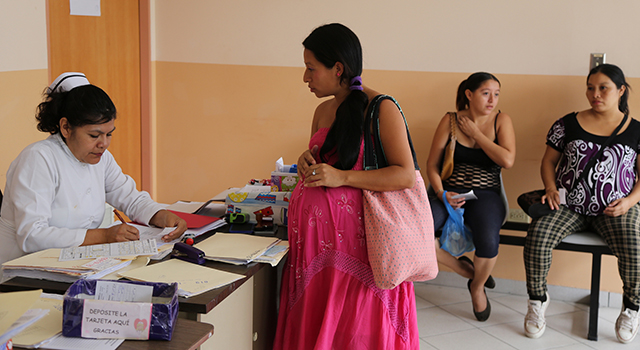
A local Healthy City effort aims to achieve better conditions for health and wellbeing for all. Working with municipal governance, a Healthy Cities approach uses methods of Health Promotion: the process of enabling people to increase control over, and to improve, their health and wellbeing, and that of all those living in the community.
In the Americas, the Healthy Municipalities, Cities, and Communities Movement reflects the values of the universal right to health, social justice, and inclusion. This can be seen in local efforts to create safe and healthy settings—schools, workplaces, homes, and public places—that support health and well-being for all.
This movement has been taking place in the Region of the Americas for 30 years. A milestone to be highlighted is the Santiago Declaration of Latin America and the Caribbean (2016). This Declaration deepened discussions in the Region; contributing globally, to the Shanghai Declaration and the Shanghai Consensus on Healthy Cities. These works are linked to efforts to address social determinants of health and U.N. Sustainable Development Goals.
In 2022, the Panama Declaration was adopted in the context of the V Meeting of Mayors for Healthy Municipalities, Cities and Communities in the Region of the Americas.
The Strategy and Plan of Action on Health Promotion in the Context of the Sustainable Development Goals 2019-2030 was approved by the member states in 2019 at the 57 Directing Council. This strategy proposes four mutually reinforcing strategic lines of action:
- Strengthen key healthy environments;
- Facilitate community participation and empowerment, and civil society engagement;
- Strengthen governance and intersectoral work to improve health and well-being and address the social determinants of health; and
- Strengthen health systems and services by incorporating a health promotion approach.
In September 2022, considering lessons learned from the COVID-19 pandemic, the 30 Pan American Sanitary conference approved the Policy for Recovering Progress Toward the Sustainable Development Goals with Equity Through Action on the Social Determinants of Health and Intersectoral Work. One of their five lines of action is to strengthen local governance.
The guidance document, “Regional Criteria for Healthy Municipalities, Cities, and Communities in the Americas” (2023), offers a blueprint for the process of building healthier communities. It elaborates on ways of “taking action to strengthen governance and intersectoral work to improve health and well-being and address the social determinants of health” (strategic line of action 3 above).
The Regional Criteria highlight three strategic pillars that support the work of building healthy municipalities:
- Intersectoral action: Coordinated work and joint interventions across different sectors (e.g., health, education, social protection, commerce, transport)
- Community participation: Process by which people living in and experiencing conditions have opportunities to influence all aspects of the action cycle (including assessment, planning, action, evaluation)
- Equity: Consistent with social justice, eliminating differences in health and well-being outcomes among groups caused by differences in their social, economic, demographic, circumstances or where they live.
The guidance in the Regional Criteria includes recommended actions and indicators of success for six areas for policy action:
- To strengthen local leadership and governance for health and wellbeing (e.g., adoption of public policy statement of commitment to building a healthy municipality; healthy municipality plan; corresponding budget);
- To promote intersectoral action for health and wellbeing (e.g., adoption of mechanisms to facilitate and coordinate intersectoral action for health);
- To promote participation, community empowerment and social cohesion (e.g., having institutionalized participation mechanisms that enable engagement of all those in the community);
- To guarantee access for the entire population to basic services essential for health and wellbeing (e.g., assuring universal access to different essential services including health, water, and sanitation);
- To foster healthy, inclusive, and safe environments (e.g., healthy housing, healthy environments, green spaces, sustainable mobility policy);
- Strengthen the capacities for preparedness and response to emergencies, disasters, and epidemics (e.g., emergency, disaster and epidemic preparedness and response that mitigates harms for groups in vulnerable situations)
This Healthy Cities Action Toolkit—available in English and Spanish—offers guidance and resources for elaborating a participative action plan for advancing on the implementation of the criteria and their actions. Working closely with the communities, this can contribute to healthier municipalities, cities, and communities. It provides tools (recommended actions, reflection questions, examples, links to resources) to help implement locally-determined areas for policy action.